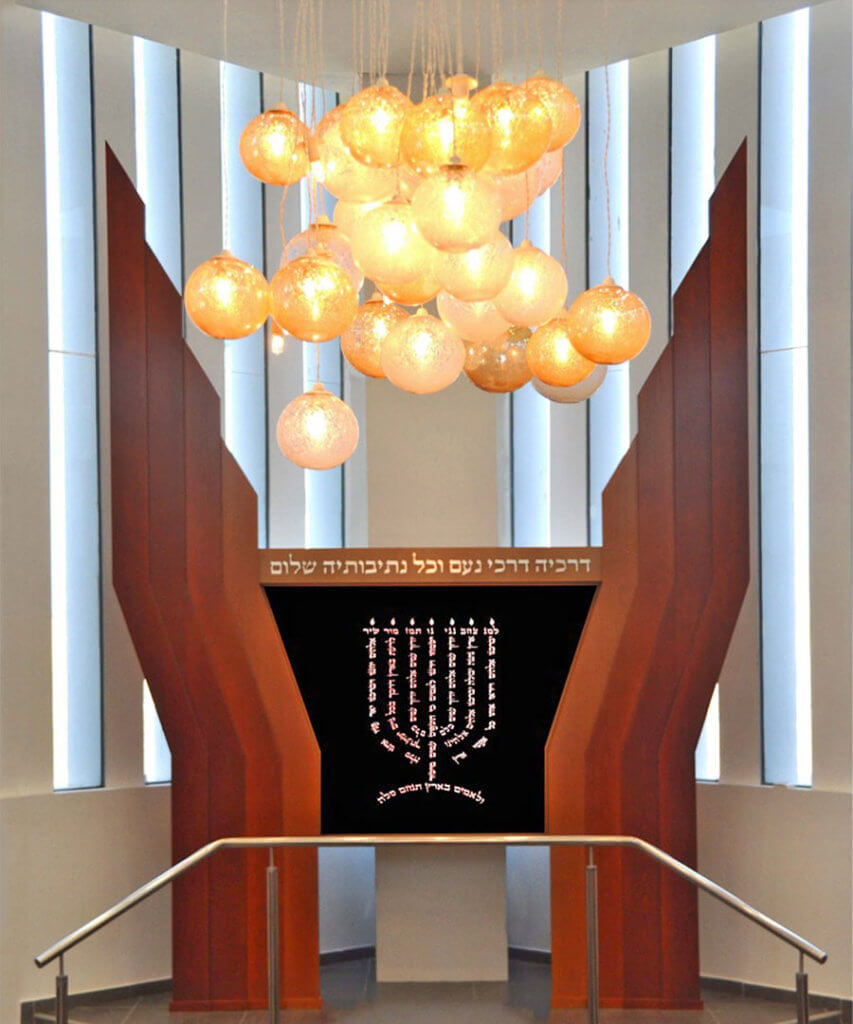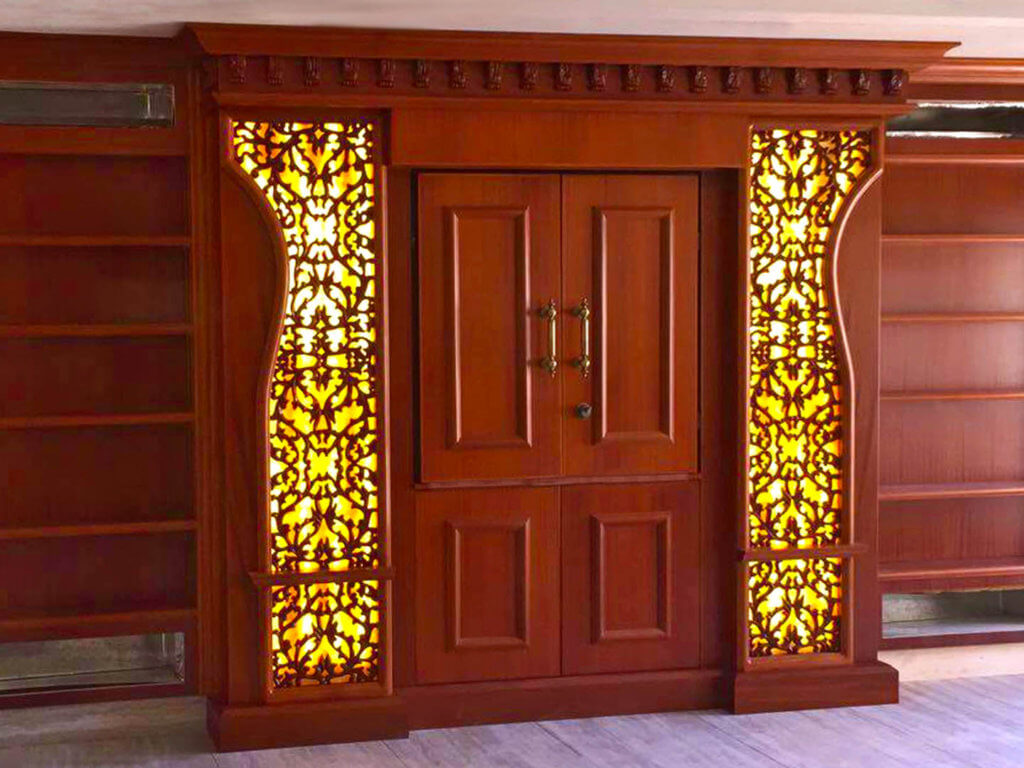The design of an Aron Kodesh touches in so many different nuances. To help you on the way, here is a list of the top seven factors you should consider throughout the process:
1. Get Inspired

In order to know where you’re going with the decorating – you need to have a plan.
Start with gathering inspiration: Synagogue interior images, Aron Kodesh pieces you liked, textures, and materials. Group everything into a folder to keep a clear and coherent vision in one space.
2. EXPLORE THE LAWS OF BUILDING AN ARON KODESH

Before entering the planning process, be aware of the halachic definitions in order to avoid costly mistakes. Here are some basic laws that apply to the building and structure of an Aron Kodesh:
The Aron Kodesh should have two separetions from the congregation, typically a wood door and a Parochet (curtain).
The Aron Kodesh should be placed in the eastern wall of the synagogue, facing Jerusalem.
It is permitted to install an alarm device inside an Aron Kodesh, which activates a loud siren sound in case of burglary, since it was intended to protect the Torah scrolls.
The Aron kodesh should be elevated above the ground height, in order to honor the Torah scrolls which inside it.
3. Draw a General Sketch of the Aron Kodesh According to All Requirements
One important thing to consider is the convenient of access to the Torah scrolls. Sketch the major dimensions, heights and spaces you need, including consideration of Aron kodesh halachic definitions and Accessible for the handicapped.
4. Set a Budget

Early on, you must figure out the total estimated costs needed to complete the entire project according to the schedule.
Aron Kodesh projects are characterized by a huge variety of artistic types. Therefore, the price range is very wide and flexible. From classic and respectful design to luxurious designs combining imported and expensive materials, rare art pieces and complex work requiring advanced techniques.
Before you come up with a solid concept for your Aron Kodesh design, it is very important to set an achievable budget. It will help the design team present you the range of options your budget allows.
5. Choose the Design Style
Whether you have to consult the building committee, the congregation leaders or you get a free hand, the decision of design style has to be precise in order to serve the physical and spiritual needs of the community.
Here are 4 common Synagogue and Aron Kodesh styles:

Traditional: Natural materials, deep wood tones, symmetry, detailed woodwork, carved moldings, sturdy crafted furniture, and graceful lines – are some of the traditional style’s most notable features.
Renaissance: majestic and elegant style with traditional European influences. Some distinctive features of the style are massive and carved oak or walnut furniture, marble, luxurious fabrics, buttery leather, painting decorations, stucco, gilding.
Modern: Characterized by clean and crisp lines, shiny surfaces, minimalism and the use of materials such as glass, metal and steel. Modern furnishing is sleek and free of clutter or accessories.
Ultra modern: A mixture of high technology and geometrics. The qualities of the ultra-modern (or high-tech) furnishing are lightness, simplicity and clear forms. Aron Kodesh of this style is typically includes LED lighting and use of materials such as shiny metal, glass, and even plastic.
It is also possible to mix elements from more than one style. Smart blending can create a multi-layered space which integrates aesthetics with holiness.
6. Choose Materials:

In a progressive stage of the design plan you will have to determine the list of materials you wish to use in the project.
The selection of materials is of central importance in the characterization of the synagogue. It has to reflect deeper significances, such as the connections to land, environment, and the community’s manner.
Combinations of different high quality materials in Aron Kodesh design enables to convey splendor and holiness. The most common materials are wood, stone, metal, marble, fabric and textile combinations.
7. Choose the Right Professionals:
Before any remodeling or constructing project, it is important to get a lot of deliberation about the capabilities of the contractors who offer you their services.
Choose wisely and prefer a professional with considerable experience in custom designs for synagogues of all design styles.
A good work should be performed quickly, professionally and accurately according to a rigid schedule. One meeting should be enough to make you understand whether you dealing with professionals.
Another important component is a perfect cooperation with planners, consultants and other contractors who work on the project.
Contact us to schedule a free consultation meeting.
